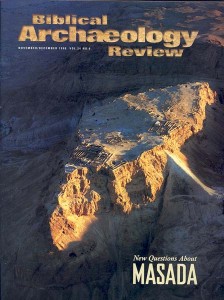Scholars Bookshelf
Early Arad II: The Chalcolithic and Early Bronze IB Settlements and the Early Bronze II City—Architecture and Town Planning
Ruth Amiran and Ornit Ilan (Jerusalem: Israel Museum and Israel Exploration Society, 1996) 188 pp., 174 photos and 31 plans, $80 +$14 shipping (hardback)
Appearing 20 years after Early Arad I, the second volume of this final excavation report goes a long way toward catching up on the final publication of excavations at this important eastern Negev site.
Arad began as a rural settlement in the Chalcolithic period. Like other Chalcolithic sites in the Negev, it was deserted for about 250 to 350 years in the middle of the fourth millennium B.C.E. This long gap was followed by another rural settlement at Arad in the Early Bronze (EB) Ib period (c. 3200–3000 B.C.E.). Two major strata (Strata III and II) belong to urban phases of this settlement. These were followed by a post-destruction settlement that reverted to a rural way of life again in Stratum I, near the end of the EBII period (c. 2650 B.C.E.).
In Arad II, excavation director Ruth Amiran, one of Israel’s most distinguished archaeologists, and her co-author, Ornit Ilan, publish the 6th to 18th seasons of excavation (1971–1978, 1980–1984). They offer a detailed architectural analysis of the remains of Strata V through I, from the Chalcolithic period (c. 4000–3400 B.C.E.) to the EBII period (c. 3000–2650 B.C.E.).
Already a library member? Log in here.
Institution user? Log in with your IP address.

